Scientific name Canis lupus familiaris | Color Black & White | |
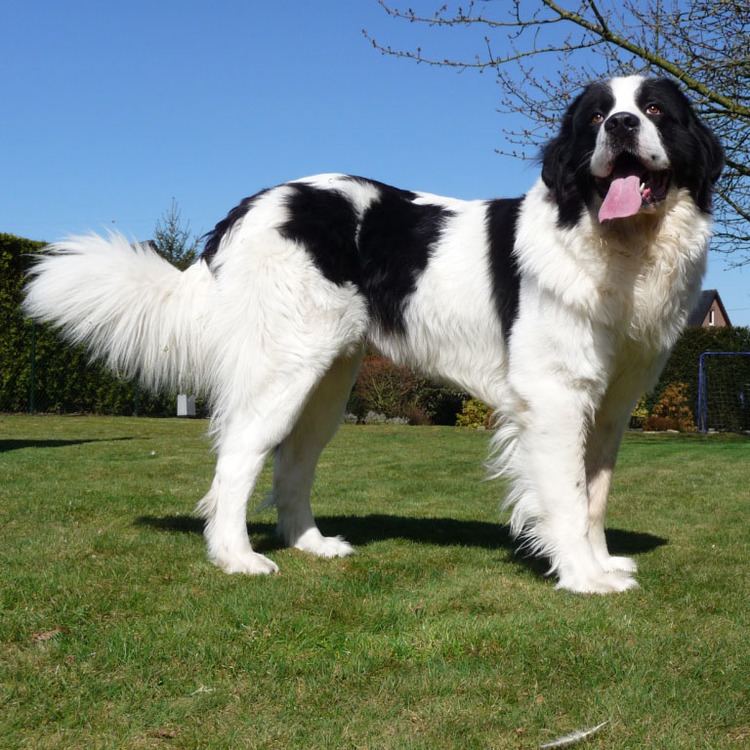 | ||
FCI Group 2, Section 2.2 Molossian: Mountain type #226 Temperament Playful, Courageous, Generous, Patient, Intelligent, Loving Height Male: 72–80 cm, Female: 67–72 cm Weight Male: 59–68 kg, Female: 45–54 kg Similar Leonberger, Newfoundland, Hovawart, Broholmer, Aidi | ||
The Landseer (European Continental Type) is a dog breed. The breed is not recognized by all kennel clubs. It is not to be confused with a white and black Newfoundland, which is also often called a "landseer". The Landseer E.C.T. (European Continental Type) is a separate breed and recognized as such by the Fédération Cynologique Internationale.
Contents
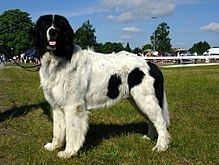
The breed was named after the British painter Sir Edwin Henry Landseer, because in 1838 he created the painting A Distinguished Member of the Humane Society, which shows a dog of this breed.

Temperament
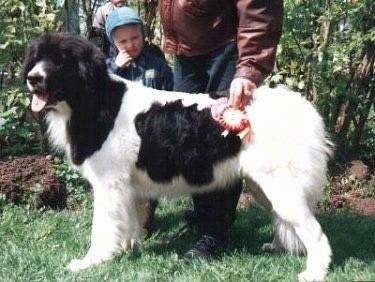
The Landseer Newfoundland dog is known for its sweet disposition, gentleness, and serenity. They enjoy swimming and tend to drool, though not as much as some other giant breeds.
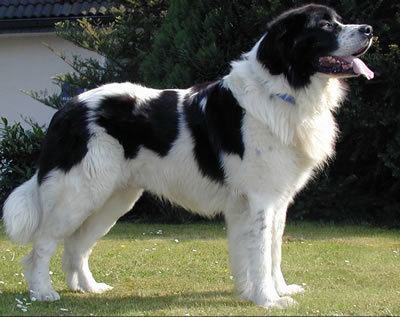
While the Landseer European Continental Type is also sweet, affectionate and enjoys swimming, it is quite different from the Landseer Newfoundland in regard to response, agility and speed.
History
During colonial times, large white and black "Newfoundland dogs" were brought to England. Because of their good swimming skills, these dogs were utilized by fishermen to tow nets to the shore. They were also noted for their ability to help drowning people; therefore, these dogs were bought and sold mainly by European fishermen. It is believed that, by and large, the exportation of these dogs occurred during the late 18th century. However, paintings show us that these dogs must have already existed in England in the early 18th century.
Because of their impressive appearance they were the subject of numerous books and paintings.
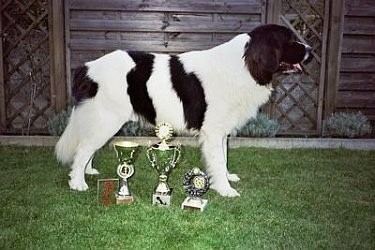
The most famous painting of a large white and black dog of this type is a portrait called "A Distinguished Member of Humane Society" done by the renowned English animal painter Sir Edwin Landseer in 1838. In fact the subject matter of many of Sir Edwin's paintings focused on these dogs. The dog portrayed in one of the most famous paintings is believed to have saved more than 20 people from drowning. It therefore was adopted as a member of the humane society.
Unfortunately, by the end of the 19th century the Landseer Continental Type were not recognizable. Some breeders attempted to build the breed back up in the beginning of the 1900 but their efforts were thwarted during World War I when most of the dogs were killed. After World War I some enthusiastic breeders in the Netherlands, Germany and Switzerland began breeding these dogs again. Between 1945 and 1960 the Landseer Continental Type was bred as a part of the Newfoundland Clubs in Europe.
As the dogs had many differences to the Newfoundland and the popularity of the Landseer Continental Type grew the breed was recognized as a separate breed by the FCI in 1960. The breed is believed to be a cross between the Pyrenean Mountain Dog and Newfoundland. The breed's popularity has soared and is now seen across Europe.
Body
The Landseer ECT is in many ways different from the Newfoundland. In general the Landseers ECT are taller, do not have a deep breast, have shorter hair, no under wool and their long legs make them fast, untiring runners.
All in all the Landseer ECT is quicker and more responsive than the Newfoundland which makes him easier to train and teach. As their coat is not as dense they dry off quickly and their fur is easier to clean and take care of.
In popular culture
The dog Nana in Peter Pan, although often portrayed as a St. Bernard, was intended to be a Landseer.
The 2004 movie Finding Neverland featured a Great Pyrenees as J. M. Barrie's pet, on whom Nana was based.
J. M. Barrie owned a Landseer Newfoundland called Luath.
